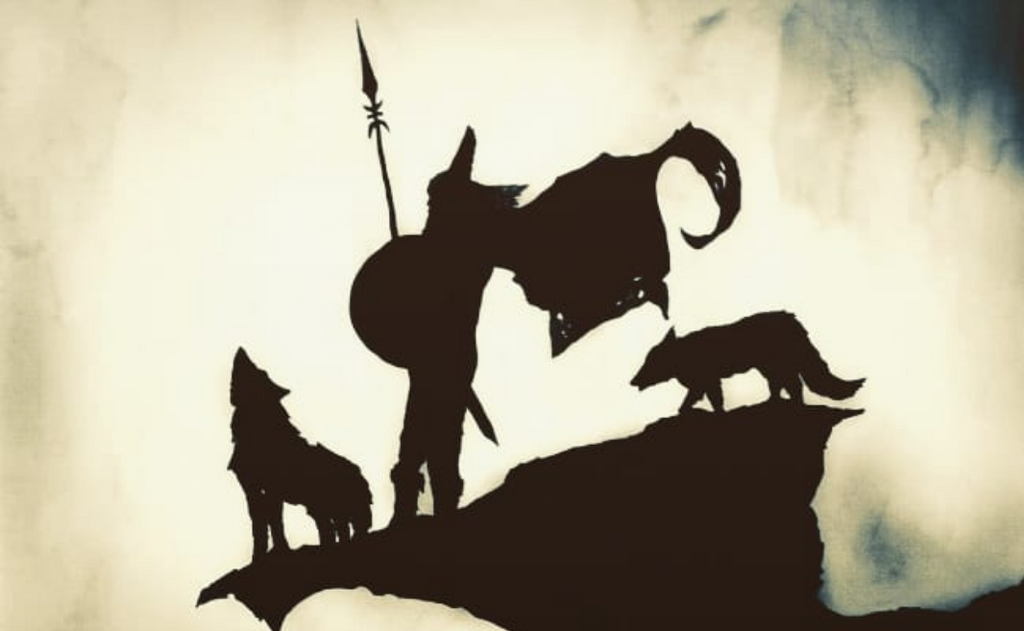Odin Was the God of Gods From the Beginning?
Whenever we talk about Norse mythology, if not Thor, Odin will be the first to come to our mind. It is reasonable because Odin is the chief God in stronghold Asgard in Norse mythology.
The historians believed that ever since the 13th century, Odin has been transformed into a kind of Christian god. To be specific, Odin was a Norse god with many Christian traits. During that time, Christianity became the most popular religion in Europe. So during this time if people wanted to talk about some pagan stuff, they had better add some Christian details to it. Reasonably, figures from Norse mythology had the Christian traits.
People at that time were not to blame for this because Christianity was so deeply ingrained in their society. If they wanted other people in the society got the moral understanding of the Norse mythology, they had to sacrifice. The sacrifice here was to attach some Christian traits of God to Odin the Allfather.

Odin the Allfather was attached to many Christian traits when Christianity became the major religion in Europe
Though Odin was compared with the Christian god, Odin was not the central character in Norse mythology from the Creation of the World, according to some scholars.
He had not been the God of Gods, the Allfather, the wisest god, and the universe had not revolved around Odin until the Viking Age.
The cult of Odin was not originated during the glory of the Viking Age (8th - 11th century). It is hard to tell exactly where Odin came to Scandinavia. What we have from the historians is about the 5th century. When Odin came to Scandinavia, he was not the central figure. Only during the Viking Age that Odin gained the popularity and emerged as the chief god of gods.
And from that moment Norse mythology turned around Odin, his sons, and the Aesir god family.
Beowulf (dating back to 8th century and 11th century) and Volsunga Saga (13th-century Icelandic Saga) had the representations on the stone dating to the 11th century. These stories featured Odin as the Allfather, the chief god of gods. This somewhat makes me think that Odin was not that old. He was not the God of Gods from the beginning. But one thing we should also remember is that for the stories to be written down and carved on the stones, they belonged to the oral tradition dating back to long ago. This is confusing because it suggests Odin was much older.
If we turn to the archaeological and historical evidence, Odin in the religious context was really that old.
In Sweden, people practised the hanging sacrifice from the 5th century. Some historical evidence pointed out that the hanging was a historical act distinctly by the Scandinavians. The humans were sacrificed to the god of war. No name of the god was mentioned.
Because of this, a group of scholars believed that this god was Tyr Norse god of war. But archaeological evidence claimed that Tyr was an unimportant god in Norse mythology. So the god that was dedicated to the hanging could only be Odin.

This evidence suggests that the cult of Odin first took place in the 5th century or 6th century. But it was the cult of Odin, not the god himself.
Odin was a Germanic god. And Odin the Allfather did not appear in Scandinavian religion after the Germanic invasions. But the people of Sweden maintained to worship Freyr as their major deity for Freyr was the god of fertility and sunshine, probably these were what they needed the most.
Overall, Odin was the Germanic god of war. The worship of Odin in Scandinavian regions seemed to start during the late 5th century and the beginning of the 6th century. Odin only became the major deity in the glory of the Viking Age when the Vikings went viking. The 13th century when the Viking Age collapsed, Odin was Christianized to become the God of Gods, the Allfather, and was associated with creation. (Note that the article presents the objective viewpoint of scholars)
But undoubtedly, ever since the Viking Age, Odin has become a great figure and an inspiring character. In the modern sense, the inspiration that Odin keeps instilling into the Viking and Norse enthusiasts never seem to fade away.




